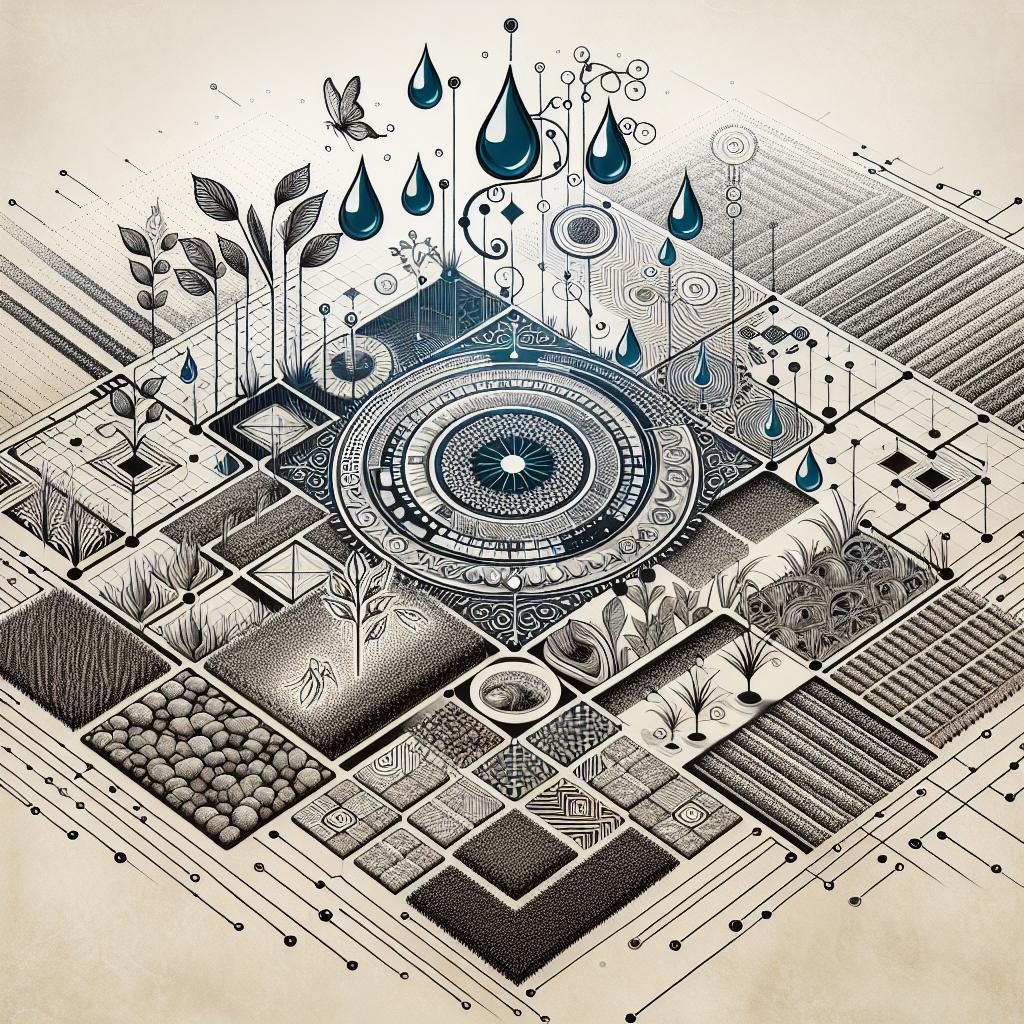This post may contain affiliate links which means I may receive a commission for purchases made through links. Learn more on my Private Policy page.
Unlocking the Secrets to an Efficient Irrigation System: A Guide to Maximum Coverage
Imagine stepping into a vibrant garden, where every leaf sparkles with healthy moisture and every blossom bursts with color. The secret to this lush paradise? A well-optimized irrigation system that knows precisely how to deliver water where it’s needed most. Weather you’re nurturing a backyard oasis or managing a larger agricultural operation, the layout of your irrigation system can make all the difference in achieving maximum coverage and efficiency. in this amiable guide,we’ll explore creative strategies and practical tips to help you design an irrigation system that not only quenches the thirst of your plants but also conserves precious resources.So roll up your sleeves, grab your watering can, and let’s dive into the world of irrigation optimization!
Understanding Your Landscape for Ideal Irrigation Placement
To achieve optimal irrigation placement, it’s crucial to have a extensive understanding of your landscape’s unique characteristics. Start by observing key features that affect water distribution, such as:
- Slope – Steeper areas may require more frequent watering.
- Soil Type – Different soils have varying drainage capacities.
- Sunlight Exposure - Plants in sunny spots may need more water than those in shaded areas.
Once you’ve assessed these aspects, consider creating a scaled map of your property to visualize placement options for your irrigation system. Pay attention to natural boundaries like trees or hedges that can obstruct water flow. Utilize tables to compare the effectiveness of potential placements:
| Placement Option | Coverage Area | Water Efficiency |
|---|---|---|
| Drip Irrigation | High | Very Efficient |
| Sprinkler System | Medium | Moderately Efficient |
| Soaker Hoses | Low | Efficient for Rows |

Choosing the Right Equipment to Enhance Coverage Efficiency
Maximizing coverage efficiency in an irrigation system hinges significantly on selecting the right equipment tailored to your unique landscape and crop needs. Identify your primary goals—whether it’s maximizing water flow, reducing waste, or achieving uniform distribution. Some essential considerations include:
- Sprinkler Type: Choose between fixed, rotating, or drip systems based on your specific irrigation requirements.
- Flow Rate: Assess the compatibility of your chosen equipment with existing water pressure to ensure optimal performance.
- Coverage Area: Match the spacing of your sprinklers with the intended area to promote even water distribution.
Moreover, it’s vital to evaluate the adaptability of your equipment for adjusting environmental conditions like soil type and slope. A well-designed system might also incorporate:
- Smart Controllers: Use technology to automate and optimize water usage effectively.
- Adjustable Nozzles: Allow customization of spray patterns, enhancing precision targeting.
- Pressure Regulators: Maintain steady pressure to prevent over-spray or under-spray scenarios.
| Equipment Type | Best For | Key Benefits |
|---|---|---|
| Sprinklers | Large fields | Even distribution |
| Drip Emitters | Gardens & Trees | Water conservation |
| Soaker Hoses | Flower beds | Reduced evaporation |

Designing Fluid Borders: Creating a Seamless irrigation Flow
When orchestrating an irrigation system, envisioning fluid borders can transform water management into an art form. To achieve a seamless flow, consider establishing curvilinear layouts that mimic the natural contours of the land. This adaptability not only enhances aesthetic appeal but also maximizes coverage. here are some strategies to implement:
- Utilize contour mapping: Identify the topography of your landscape to design irrigation that follows its natural shape.
- Implement drip lines: Drip irrigation ensures precise delivery of water, reducing runoff and maximizing soak time.
- Incorporate zones: Divide your landscape into distinct watering zones based on plant needs and sun exposure.
Additionally, monitoring your irrigation system regularly is crucial for maintaining those fluid borders. Using smart technology can provide real-time data on moisture levels, allowing for tailored adjustments. These tools ensure that every drop counts while minimizing waste. Consider compiling your findings into a simple overview.
| Element | Benefit |
|---|---|
| Smart Sensors | Provides moisture feedback for optimized watering. |
| Rainwater Harvesting | Reduces reliance on municipal water sources. |
| Soil amendments | Improves water retention and plant health. |

Regular Maintenance Tips for Sustained Performance and Savings
To ensure your irrigation system consistently delivers optimal performance, establishing a routine maintenance schedule is essential. Regular checks can prevent minor issues from escalating into costly repairs. Consider incorporating the following practices into your maintenance regimen:
- Inspect Sprinkler Heads: Check for blockages or damage to maintain even water distribution.
- Test Pressure Levels: Ensure the system operates at recommended pressure for efficient water usage.
- Clean Filters: Routinely clear debris from filters to improve flow and reduce wear on components.
- Check Wiring and Connections: Inspect electrical components to prevent malfunctions and ensure reliability.
Additionally, keeping your irrigation system calibrated can lead to notable water savings and improved plant health. A well-tuned system means better resource management, which can lead to reduced utility costs. Here’s a simple table to help you track essential maintenance tasks and thier frequency:
| Maintenance Task | Frequency |
|---|---|
| Sprinkler head inspection | Monthly |
| Pressure testing | Quarterly |
| Filter cleaning | Every 3 months |
| Wiring checks | Biannually |
In Summary
as we wrap up our journey through the intricate world of irrigation system optimization, remember that the key to a flourishing garden—or a bountiful farm—lies in the details. Just as each plant has its specific needs, so too does each landscape require a thoughtful approach to coverage and efficiency.
By implementing the strategies we’ve discussed, from selecting the right equipment to designing a layout that maximizes water distribution, you’re not just nurturing your plants; you’re cultivating a sustainable future. Visualize your outdoor space as a canvas, where every drop of water paints a picture of vitality and growth.
So grab your blueprint, let your creativity flow, and embark on this rewarding endeavor with confidence. Here’s to lush greens and abundant yields, one optimized irrigation system at a time! Happy gardening and farming—may your gardens flourish and your harvests be plentiful!
This post may contain affiliate links which means I may receive a commission for purchases made through links. Learn more on my Private Policy page.
